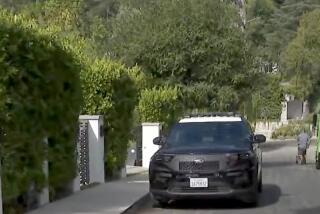Changing Valley’s Perception Is 1st Step to Fighting Poverty : Many still believe area is rich, white and doing just fine
A local radio host unwittingly summed up the problem last week when he joked that poverty in the Valley means folks in Encino have to clean their own swimming pools. A few decades ago, the crack might have been as funny as it was true. But as last week’s Times Valley Edition series showed, that sort of blind-eye attitude to the Valley’s staggering population of poor families only ensures that little will be done to fix things.
There was once a time when the Valley delivered on its promises of prosperity. Poverty was a city problem virtually unknown among the wide boulevards and neatly trimmed lawns of what was arguably America’s most famous white-bread suburb. But by 1995, one in six Valley residents fell below the poverty line and one in seven received welfare, food stamps or Medi-Cal. The poverty rate in the Valley was higher than in the nation as a whole. Even many of those used to comfortable middle-class lives find themselves teetering on the brink, where just paying the mortgage and keeping the car running is a blessing.
Although the average Valley household remains middle or upper-middle class, few are immune to the uncertainties and hardships brought with dwindling numbers of well-paying aerospace jobs and increasing numbers of poor and poorly educated immigrants. Former Rep. Bobbi Fiedler noted: “Anybody who is working today is living on the edge.”
It’s an unfortunate truth. But even more unfortunate is the perception of the Valley not as what it is, but as what it was. Local social service agencies complain that already scarce resources are even tougher to rustle up because of the perception here and elsewhere in Southern California that Valley residents are white, wealthy and doing just fine. Change first requires changing the way the Valley is perceived both by itself and by outsiders.
And that may be the toughest part of all. Unlike the crushing and obvious poverty of some East Coast cities, the Valley’s suburban layout and the relative newness of its housing stock tend to camouflage the poor. Many apartments or bungalows might seem tidy enough, but they also might be hiding several families sharing space built for just one.
The Valley now faces all the same problems its early suburban pioneers sought to escape. Will simply recognizing the changes make much difference? No. But it’s a start. Turning our backs will only ensure that more children go to school hungry, that more families crowd together and that the Valley’s promise of a better life goes unfulfilled.
More to Read
Sign up for Essential California
The most important California stories and recommendations in your inbox every morning.
You may occasionally receive promotional content from the Los Angeles Times.










